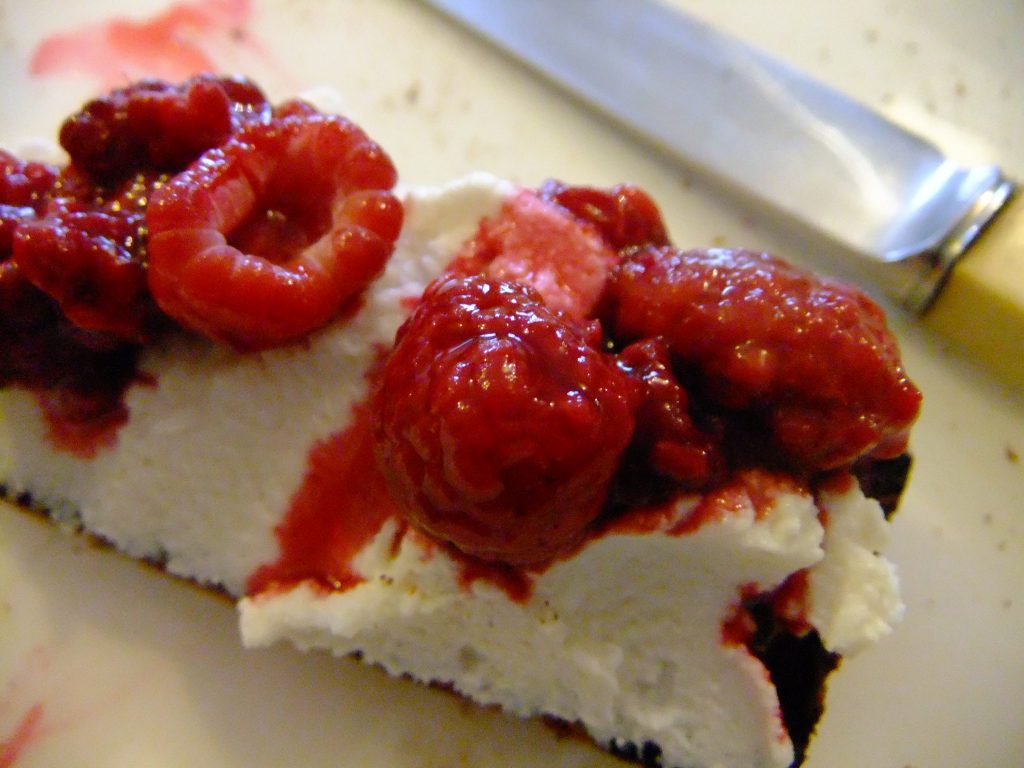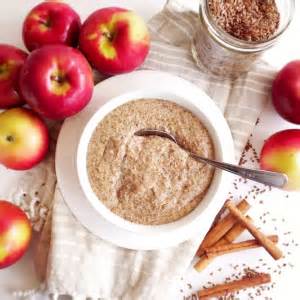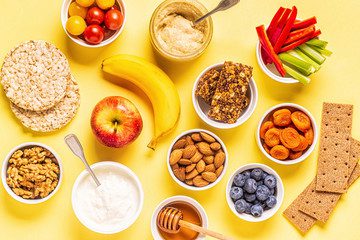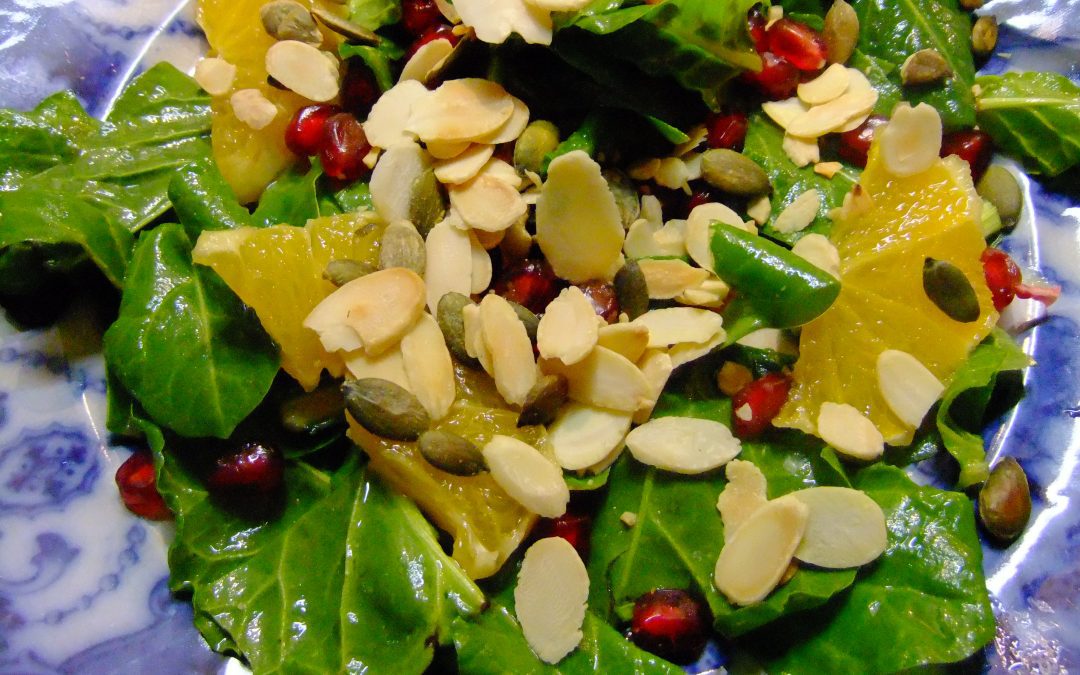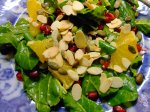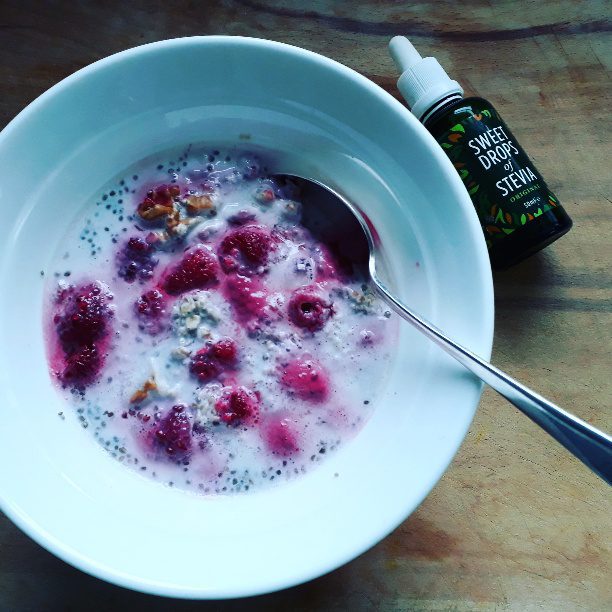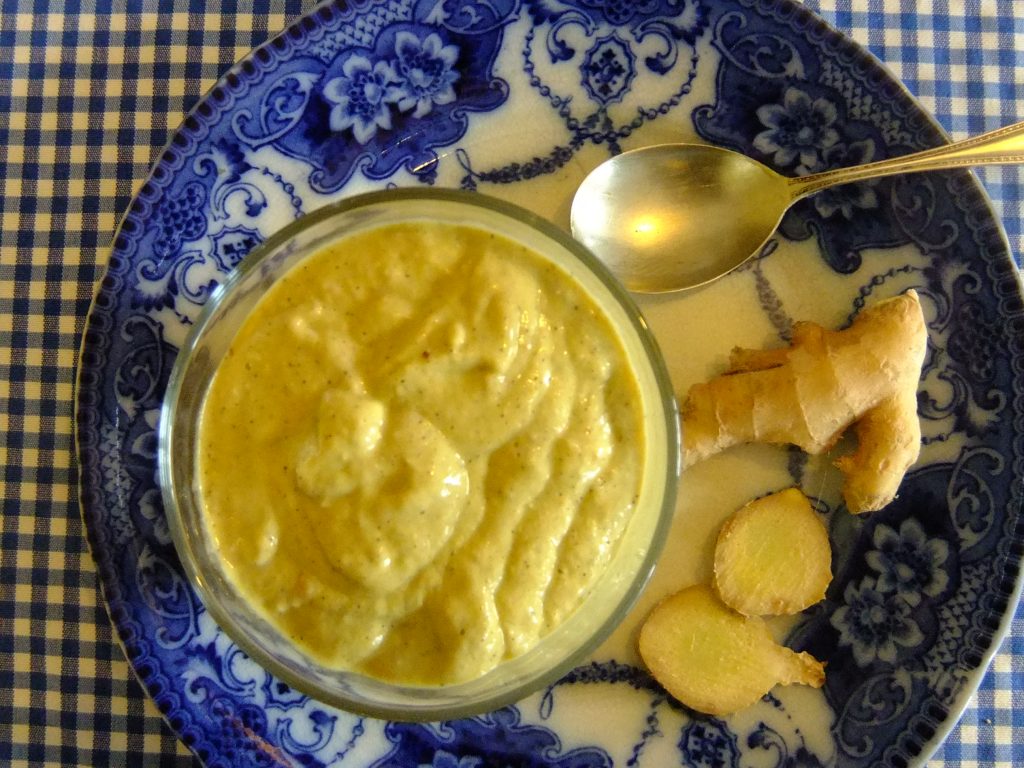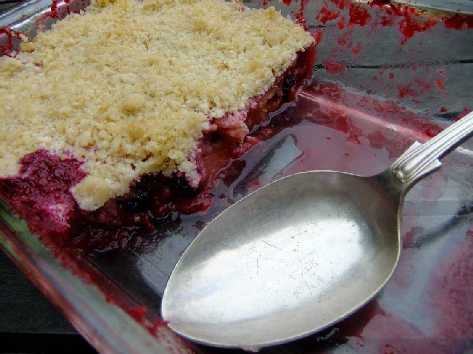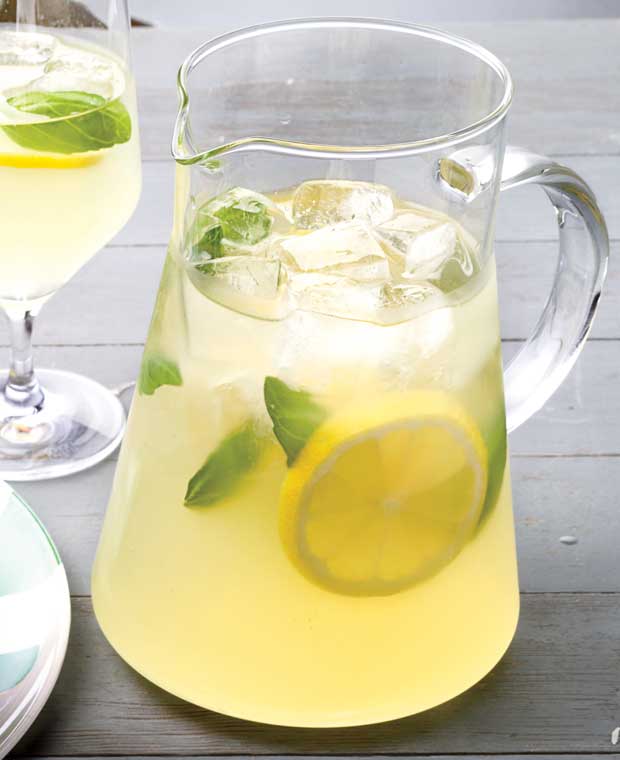
May 3, 2019 | Anna's Best Recipes, Breakfasts & smoothies
I love this and invented it one weekend a few years ago when I saw beautiful ricotta on sale. Now I see it seems to be “a thing” on the internet. Quantities are to serve 2, as usual. If you use frozen berries and you forget to thaw them overnight first, just put into a pan and warm with about 1 dessertspoon of xylitol or around 5 drops of steviaor some erythritol/xylitol and warm gently, covered, until thawed. Allow to cool a bit before using.
2 mugs (about 200g) (THAWED OVERNIGHT) frozen or fresh organic raspberries or strawberries (personally I love frozen cos when you thaw them you get lots of juice)
4 small slices 100% wholemeal gluten-free bread (if you eat gluten, 100% wholemeal spelt, wheat or rye sourdough is great with this)
100-150g tub super-fresh ricotta cheese (NOT salted ricotta)
1/4 tsp vanilla powde or vanilla extract (make sure its extract not essence if you want to be gluten-free)
Stevia drops, erytirotol/stevia or xylitol to sweeten
1. Mix the vanilla powder/extract into the ricotta and add stevia/xylitol/erythritol to taste.
2. Toss your berries (with any juice that came out) with stevia/erythritol/xylitol to sweeten to your liking.
3. Toast your bread, divide the ricotta between the 4 slices, piling on top, and spoon over the berries and their juice (if any).
4. Enjoy for a leisurely breakfast.
Why this is better for you
Ricotta is rich in protein which keeps you fuller longer than if you just ate toast with fruit or jam for breakfast. The protein stops your blood sugar from soaring too high too quickly, which would cause inflammation and accelerated ageing. Protein slows digestion so this is a slow-burn energy breakfast. Slow burn meals are really important if you want to be well long-term and be the best body shape for you. Strawberries (and raspberries) are really rich in vitamin C and polyphenols which help keep every part of our body young-looking, springy and strong – from your skin to your arteries and intestines. Do go for organic if at all possible. Xylitol, stevia and erythritol have NO effect on blood sugar – this is good news for all of us, not just people with diabetes.

Nov 1, 2018 | Anna's Best Recipes, Desserts & drinks
This dessert is a delicious but fantastic way to help regulate your immune system by feeding your good gut bacteria. Sweeten it if you like with some stevia drops. The reason for the skin is it provides more polyphenols (immune-supporting plant compounds that lower inflammation in your gut). If your apples are not organic give the skins a good scrub. In the Autumn, I like to make up a ton of this and bottle it in sterile jars to keep in the larder. A dollop on your morning porridge (grain-free if you’re on the SC diet), or eat with some natural coconut or dairy yoghurt. You decide. I also use it for apple sauce for duck or pork. If you’re wanting some every day divide into ramekins and store in the fridge for up to a week. Ceylon cinnamon preserves it.
For 6 servings:
A tray of Bramley (cooking) apples (about 600g), organic if possible
1/2 cup organic raisins/organic sultanas
A little water
2 tsp Ceylon/Sri Lanka cinnamon (plain “cinnamon” is cassia, which doesn’t have the health benefits and in very large amounts cumulatively over time is toxic).
Inulin, honey or (if you must) 100% pure stevia/xylitol or erythritol to sweeten
1. Wash the apples and grate off some of the skin. Put skin in a saucepan with a little water.
2. Peel and slice the rest and add to saucepan. Add a splash of water, cover and stew gently until the apples soften and fall apart into a puree. This usually takes around 15 minutes. This part is important because it releases the pectin, an important prebiotic fibre which feeds your healthy gut bacteria.
3. Remove from the heat and stir in 2 heaped tsp Ceylon cinnamon.
Why this is good for you
Would you like your immune system to be in perfect balance? Protecting against infections and also avoiding/getting into remission from autoimmunity, inflammatory conditions or allergies? These days, lots of us have health conditions where our immune system is out of control. Allergies, asthma, eczema, colitis and Crohn’s, autoimmune hypothyroidism are just some examples. Stewed apple may be one of the most perfect foods for helping your good gut bacteria grow in order to dampen down an out-of-control immune system. In treating inflammatory bowel disease a daily serving of stewed apple is as powerful as prednisone, a steroid medication. Naturally we need LOTS of different plant foods in our week to foster a wide variety of good bacteria. But stewed apple is a great start, especially if you are someone who can’t tolerate raw fruit at the moment.
When you stew COOKING apples you liberate pectin. Apple pectin encourages growth of the friendly bacteria akkermansia mucinophilia. The clue is in the name. These critters nibble the mucus (yes, I know, yuck!) in your bowel, keeping it trimmed so there’s the right amount. This is important in helping get rid of GI infections and helping nutrient absorption.
Apples naturally contain sugar so it’s better not to have huge amounts of this – just the equivalent of one medium apple is the amount you want as a dessert, otherwise you are overloading with sugars. Too many sugars, even natural ones, slow down your liver function and immune system and feed health-sabotaging bacteria in your gut.

Oct 5, 2018 | Anna's Best Recipes, Breakfasts & smoothies
 I love this autumnal porridge with apples from the garden (we have a glut right now). Add Ceylon cinnamon, a grated apple and a dessertspoon or two of protein powder and you have a slow-burn meal that takes you through to lunch no problem. I love spices and what they do for your body so if I have time I also put in a pinch of ground cloves – a reminder of my childhood and my mother, who made the best apple tarts, always with a few cloves. Instead of the apple stirred into the porridge you can also top the finished product with a cupful of thawed or fresh mixed berries.
I love this autumnal porridge with apples from the garden (we have a glut right now). Add Ceylon cinnamon, a grated apple and a dessertspoon or two of protein powder and you have a slow-burn meal that takes you through to lunch no problem. I love spices and what they do for your body so if I have time I also put in a pinch of ground cloves – a reminder of my childhood and my mother, who made the best apple tarts, always with a few cloves. Instead of the apple stirred into the porridge you can also top the finished product with a cupful of thawed or fresh mixed berries.
For 1 big eater (if portion size seems too big, reduce oats by 1/3 and protein powder to 1 rounded dsp)
Just under 1/2 mug (about 40g) gluten-free porridge oats or (if you are not gluten-sensitive, normal porridge/jumbo oats/oatmeal)
1 tsp Ceylon (Sri Lankan) cinnamon
1-2 dsp additive-free protein powder (I like a mix of sprouted rice protein and pea protein or Nu Zest brand but for dairy-eaters grass-fed whey protein concentrate like Solgar Vanilla Whey-To-Go is also good and some people prefer it)
1 apple – organic if possible
1 heaped tbs (2 heaped dsp) mixed raw milled seeds (get a blend that includes flax/chia)
Optional: pure stevia drops to sweeten (if you are only just weaning off sugar) or use a little xylitol or erythritol/stevia blend (from health shops)
1.If you think of it the night before, soak your oats in boiling water – cover the oats so you have at least 1.5cm of water on top, they will drink it all up. This reduces the cooking time A LOT and makes them easier to digest. If you forget to soak the oats overnight, just pour on boiling water when you get up.
2.Bring the oats to the boil then simmer until a lot of the grains have broken down.
3. Grate your apple (unless its organic, peel it first) into the porridge, add the cinnamon, protein powder and (if using) your stevia drops/xylitol etc. Give it a good stir. At this point it will probably be too thick so add some boiling water, give it all a good stir and pour into your bowl.
4.Top with the seeds and get stuck in.
Why this is good for you:
Oats and apples are a rich source of prebiotic fibre that feeds your good gut bacteria. These bugs are vital for digestive, skin, hormonal and mental health (in fact every aspect of your health). If the apples are not organic they are usually contaminated with agri-chemicals toxic to humans. You can read about contaminants in apples here: https://www.ewg.org/release/apples-top-ewgs-dirty-dozen . Oats are naturally low in gluten (their only gluten being contamination by wheat or barley). Low/no gluten foods are easier to digest. In all grains, beans,and pulses there are problematic proteins called lectins that are reduced by soaking/sprouting. This is why some people tolerate sourdough wheat bread but not other forms of wheat bread. The sourdough fermentation process reduces or lectins, including gluten, by over 99%. Many plants contain lectins – they are the plants defence against being eaten and digested!!
Protein: Adding protein from (seeds, additive-free protein powder) slows your digestion. This gives you a steady feed of energy rather than a quick burst, followed by feeling exhausted, down or hungry. Buy a raw milled seed mix or grind your own blend (flax, pumpkin, sunflower, sesame) using an electric coffee/spice grinder. Keep in an airtight glass jar in the fridge.
Spices: Ceylon/Sri Lanka Cinnamon (but not products labelled simply “cinnamon”) helps balance your blood sugar and is a powerful antioxidant. So if you want to lower inflammation, be a healthy weight, slow the ageing process, balance hormones and maintain a good, stable mood this sort of breakfast is a winner.
There are of course, some people who do much better on a grain-free diet altogether, but this is a more personalised area of nutrition aimed at resolving specific health issues.

Mar 2, 2017 | Anna's Best Recipes, Sides, starters, soups & snacks
If you go for longer than 5 hours between meals you might sometimes need a snack. Most people who eat well balanced meals like on this blog don’t need to snack in-between and can fast for longer for extra health benefits. But here are some really easy snacks that give you carbohydrates (naturally sugar-containing foods like wholegrains or fruits) alongside protein/good fats (e.g. nuts, yoghurt, humous) for sustained slow-burn energy. Most of these foods are packed with nutrients to help you look and feel your best. Go for organic fruit and veg if you can – glyphosate residues on “conventional” produce kill beneficial bacteria and damage your gut. If you don’t have time for breakfast some of these snacks can fit the bill now and again if you include some fresh veg or fruit.
- 2 fresh apricots/plum + 4 walnut halves.
- Medium pear + 8 almonds.
- Medium apple + dessertspoon sunflower seeds.
- Nectarine or peach + dessertspoon pumpkin seeds.
- Apple + generous teaspoon almond butter straight from the jar.
- Handful carrot/cucumber sticks or red pepper strips + tablespoon humous.
- 1-2 Nairns rough oatcakes* (available in gluten-free also) + no-sugar peanut butter.
Note: The sweet Nairn’s oatcakes/biscuits have added sugar (not a vitality-boosting snack!).
1-2 oatcakes with generous topping of humous or lots of mashed avocado. - 1-2 oatcakes with thick tahini (ideally a raw brand e.g. Carly’s, from health shops).
- 1-2 oatcakes + cottage cheese and a sprinkle of black pepper.
- Mouthful leftover cooked chicken, smoked fish + an apple, mandarin or pear afterwards.
- Handful berries + 2-3 heaped tbs natural organic yoghurt.
- 2 fresh plums/apricots + 3 heaped tbs dairy-free “yoghurt” e.g. Coyo, Abbot Kinney’s Almond Starter, or unsweetened soya yoghurt.
- Small banana blitzed with 1 cup natural yoghurt/kefir + generous pinch of turmeric or cinnamon.
- For a treat try a Nakd bar from Tesco/health shops (=nuts + dried fruit).
- For another treat try 1-2 squares of 80% chocolate + dessertspoon sunflower seeds or 8-10 hazelnuts. Not too often though – 80% chocolate still contains added sugar.
Now you get the idea – a great snack is a portion of slow-release carbs (e.g. oats, whole fruit, carrot sticks) + high quality protein and/or good fats
Why these snacks are better for you
Carbohydrates are foods naturally high in sugars or with added sugars. Grains, root veg (potatoes, carrots) and almost all fruits are high in carbohydrates. Sugar, honey, fruit juice and white grains are even higher so aren’t a great choice in your regular diet. Carbs on their own (even from natural foods) give a quick rise in blood sugar that’s dangerous for your body. This promotes peaks and slumps in energy. But carbs combined with protein/good fats give you a better, longer-lasting slow-burn energy. Protein foods include meat, fish, beans, nuts, seeds, yoghurt, cheese, lentils and chickpeas. Great news if you want to look and feel your best for a long time to come.

Jan 5, 2017 | Anna's Best Recipes, Sides, starters, soups & snacks

Spinach pomegranate & orange salad
I stole this salad from a newspaper and adapted it to include some protein (flaked almonds) so you’re not just getting a huge blood sugar spike from all the fruit. This makes a lovely starter before a winter stew of some sort. Or else make a big platter of it for a buffet meal. The colours are stunning. Pomegranates are still in season in January (they start in November in Asian shops and good greengrocers). If you can’t get pomegranates then either increase the orange to a whole one or substitute a tablespoon of goji berries soaked overnight in clean water.
2 large handfuls baby spinach, washed and dried
1 tbs pumpkin seeds (for SC diet initial 12 weeks use almonds instead)
1 tbs flaked almonds
1/2 a small orange
A fresh pomegranate (you will use 1/4 to half of the seeds)
Dressing:
3 tbs virgin hazelnut or walnut oil (or use extra v. olive oil at a push)
Juice of 1 small orange
Freshly ground black pepper
Pinch of Himalayan/Atlantic Sea Salt
1. On a very low heat in a heavy bottomed pan, gently dry the pumpkin seeds and flaked almonds, until they seem dry and the pumpkin seeds are slightly swelled. It is better to eat nuts and seeds raw but this light toasting does make them super delicious. Remove from the heat as soon as they are slightly dried and crispy.
2. While this is happening, whack your whole pomegranate all over with a wooden spoon or a pestle for a few minutes. This loosens the seeds. Then cut it in half and pick out the ruby-coloured seeds.
3. Cut your orange in half across its equator, cut off the skin and pith with a sharp knife. Cut the remaining piece in half, then slice as thickly or as thinly as you feel like.
4. Mix your dressing in a screw top jar and shake to amalgamate.
5. Now put half the pomegranate seeds, the orange, spinach, and at least a tablespoon of dressing in a large bowl and toss until coated and glistening.
6. Divide between two plates, adding more pomegranate seeds if you think there’s not enough for your liking. Sprinkle over the almonds and pumpkin seeds. Enjoy…
Why this is good for you:
Spinach, like all dark green leafy veg, is rich in folic acid. Folic acid is important for your liver, helping keep your skin clear and healthy. Its also important for your mental health, helping reduce stress levels. Pomegranates are high in antioxidants and the raw, virgin cold-pressed oils are a good source of omega 6 oils and vitamin E for beautiful skin. Don’t forget to keep your virgin nut/seed oils in a cool dark place in an airtight bottle, so the delicate beneficial oils don’t get damaged. Pumpkin seeds are a rich source of methionine (and zinc) which helps clear heavy metals and other toxins from the body. Almonds are high in calcium and magnesium for good stress management and clear skin.

Sep 23, 2016 | Anna's Best Recipes, Breakfasts & smoothies
This is just the thing for when you have a minute in the evening but no time in the morning rush. You can even make it in a glass jar with lid and take it with you to work. I adapted the recipe from one by Derval O’Rourke to have more protein and a lot less starchy carb. So it will keep you going longer and is not a weight-gainer breakfast. If you like this but find it too cool on an autumn morning, you could warm it very gently for a minute or two in a small pan before eating.
For 1:
35g gluten-free oatflakes, about 2/5 of a mug (or normal porridge oats if you eat gluten)
1 heaped tbs (tablespoon) walnuts, roughly broken up, chopped or left whole
1 heaped tbs chia seeds
1 cup frozen raspberries (or use fresh but don’t add until the morning)
10 drops pure stevia (from health stores) – optional
250 ml milk: unsweetened almond milk, thin coconut milk with no additives (or if you prefer goat’s or cow’s milk you can use that but do refrigerate overnight).
1. Put all the ingredients in a large bowl. Mix and cover with a plate or cling film.
2. Allow to stand overnight. If you used cow/goat milk store in the fridge.
3. The next morning, add another splash of milk if you fancy and enjoy.
Why this is good for you:
All grains, even oats, contain phytates. Phytates lock onto nutrient minerals like zinc, forming large molecules that can’t be absorbed into your body. Wheat contains some of the highest levels of phytates. Oats contain fewer but soaking any grain overnight dramatically reduces phytate levels. Raw berries are a powerhouse of polyphenols which help keep your body strong, healthy and young-looking. They even help toughen up a sensitive tummy or help clear your skin. Try to get organic berries if you can. Walnuts and chia seeds provide you with protein to keep you full and when they are soaked their nutrients become more available for your body to absorb. They also contain omega 3 fats and minerals to benefit your body. Unfortunately oats are steamed to make them into oatflakes so this doesn’t qualify as a totally raw breakfast but it’s still great for you.

Apr 16, 2015 | Anna's Best Recipes, Breakfasts & smoothies
This breakfast is delicious but even more importantly is packed with anti-inflammatory, immune-supporting goodness that keeps you full for hours. It’s fresh and zingy but really filling. If you like your smoothie thinner, add more liquid. If you prefer it thicker add less liquid and eat from the glass with a spoon like I do – yum!
It also has protein which your body needs in order to make antibodies to ward off infections. See below for more details of how this smoothie helps your immune system.
For 1 hungry adult:
1 scoop/2 rounded dsp of Sun Warrior Warrior Blend protein powder or other protein powder of your choice (e.g. pea protein, sprouted rice protein, or for for a dairy option, Solgar Whey to Go Vanilla) If you don’t have protein powder, make sure to use more avocado and seeds to keep you fuller longer
200ml unsweetened milk of your choice: almond, hemp, coconut milk, home-made kefir, milk
1 small/medium pear, washed
2.5cm of peeled sliced fresh ginger (slice it across the grain to avoid long fibres in your brekkie!)
1 level tsp ground turmeric (or half a thumb of peeled fresh turmeric, sliced)
Rounded tbs ground seeds e.g. linseed or a blend (e.g. pumpkin, sesame, sunflower and linseed). If you don’t have seeds you could use nuts, either ground or soaked overnight
Optional: 1/4 ripe avocado (use more if you don’t have protein powder)
Optional: a teaspoon of lecithin granules (helps you digest fats and feeds your brain)
Optional (for extra sweetness): pure stevia drops, erythritol or xylitol to taste, or a little honey
1. Remove stalk from the pear, cut up the rest (seeds and all) and throw in the liquidiser.
2. Add the liquid and then other ingredients. Blitz for a minute until smooth. Enjoy.
Why this smoothie is good for you:
Turmeric, ginger and avocados contain the natural anti-inflammatories curcumin, gingerol and vitamin E. So if you want to get rid of annoying skin conditions or boost your digestive wellness these are fantastic things to add to your everyday eating.
Flax seeds and pears contain soluble fibre which feeds the beneficial bacteria that support your resistance to infections both viral and bacvterial. Ginger is anti-viral too. Ginger and turmeric selectively encourage growth of good bugs in your gut.
Because this breakfast is rich in protein, beneficial oils and low in sugars (from fruit) it helps regulate blood sugar to keep your energy, concentration and mood even throughout the morning. Like all meals, this shouldn’t be gulped down – you need to “chew” all your food to mix it with saliva and digest it properly. Avocados are rich in monounsaturated fatty acids and vitamin E, great for moisturising skin and body from within. Yoghurt and kefir provide friendly bacteria important for a healthy digestion, clear skin and stable mood. Fermenting makes the milk easily digested, removing the casein (dairy protein) that triggers food sensitivities in so many people. Lecithin granules help emulsify (digest) fats and are a great source of phospatidyl choline. Pho. choline is only found in egg yolks, lecithin and organ meats and are essential for memory.

Sep 29, 2014 | Anna's Best Recipes, Desserts & drinks
The most gorgeous crumble I ever ate was made by my flatmate John from a glut of Victoria plums in the front garden. This jewel-red crumble from apples and berries reminds me of it. Use apples and blackberries, raspberries or even blackcurrants, or apples on their own, or plums. If you use plums it’s a good idea to quarter them and take out the stones before cooking. Just make sure you have around 1000g of fruit in total – it doesn’t have to be exact though. Remember to taste the fruit mix as soon as it has softened in the pan, adding more sweetening if you need to. Here I have used 900g apple and 100g of blackberries.
For 6 servings:
Fruit mix
1kg cooking apples (or add some red fruits and reduce the amounts of apple)
4 tbs water
Sweetening to taste: I use 30 drops of stevia or a couple of tablespoons of xylitol/erythritol (health shops)
140g blackberries (about a mugful) thawed or fresh
Crumble topping
30g virgin coconut oil, ghee, avocado oil (or, if you eat dairy, normal butter, organic if possible)
100g ground almonds
100g gluten-free oat flour (make by whizzing GF oats in your food processor) or use normal oats if you have no problem with oats
1 heaped tbs xylitol or erythritol (or a little more to taste, if you like)
A little extra oil for greasing
Pyrex/ovenproof dish/small roasting pan (I use one 17 x 27 x 6cm high and the quantities work well.
1. Preheat oven to 170c.
2. Prepare the apples by washing, peeling and slicing. Grease your dish with whatever sort of oil you are using. Layer the apples and blackberries in your dish, sprinkling over some xylitol/erythritol on each layer until all the sweetening is used up. If you are using stevia drops instead, put them in about 3 tbs of water and use this to sprinkle over the layers until everything is used up.
4. In a bowl or food processor mix the oat flour, ground almonds and xylitol/erythritol. Rub in or process the coconut oil, ghee or butter or mix in the avocado oil until the whole thing looks a bit like breadcrumbs.
5. Pour the fruit mix into the dish, spread the topping over evenly, and bake in the oven until the top is lightly browned, about 30 minutes.
Why this is better for you:
Cooked apples are a rich source of pectin, a type of prebiotic fibre that feeds your beneficial gut bacteria so critical for your immune system (and your whole body). Prebiotic fibre in oats, berries and plums also feeds good bugs. If your weekly eating contains many different types of plants, herbs and spices you will be working wonders for your gut bacteria and your health. Different beneficial bacteria need different plant fibres.
The crumble topping in this dessert is gluten-free. Gluten is difficult for anybody to digest, not just people with gluten-intolerance or coeliac disease. Gluten grains, especially wheat, are also high in phytates. Phytates are natural plant substances that inhibit you from absorbing important minerals in your diet (e.g. zinc, needed for efficient immunity).
If you are dairy-intolerant, you can still enjoy dairy in the form of ghee (clarified butter). This is where the butter is heated until it seperates. The milky white liquid on the bottom, underneath the pure butter fat, is discarded. This gets rid of the casein (dairy protein) that is a problem for people with dairy intolerances. Avocado oil is also a good choice for crumbles as it isn’t converted by the heat of the oven into a toxic fat. Avocado oil and olive oil are monounsaturated fats so much less damaged by heat then nut/seed oils like rape, sunflower or vegetable oil.
Virgin coconut oil iis also good as it contains capryllic acid and medium chain triglycerides. Capryllic acid helps inhibit overgrowth of disease-causing yeasts/candida in your gut. Medium chain triglycerides are a good source of energy which are easily digested and are burnt for energy rather than being converted into body fat.

Sep 10, 2014 | Anna's Best Recipes, Breakfasts & smoothies

Blackberry & avocado thickie or smoothie
Just concocted this for breakfast today. I had lots of foraged blackberries in the freezer and had taken out a cupful to thaw overnight. I have to say it was fab, and SOOO SIMPLE. I make mine so thick I eat it with a spoon, but you can also make it thinner with more liquid. This will keep you full for ages with its generous amounts of healthy protein, good fats and only small amounts of carbohydrate (sugars). It’s also a genius way of incorporating the fermented superfood, keffir, into your diet. Blueberries or mixed frozen berries also work fine instead of the blackberries. For the ground seeds, I grind organic seeds, keeping them fresh in a glass screw top jar in the fridge. It’s best this way but you can of course buy a good cold-milled ready-made brand like Linwood’s and store airtight in the fridge.
What you need (for one person):
1. Liquid:
200ml liquid + extra to thin: additive-free almond/coconut milk with no added sugar. (If you eat gluten, you can use unsweetened oat milk instead if you like and if you eat dairy you can use kefir or cow/goat milk)
2. Protein and good-for-you fats:
One scoop high quality protein powder – my favourites are Sunwarrior Warrior Blend Vanilla and Solgar Whey to Go vanilla (which contains dairy). You could also use sprouted rice protein, hemp protein or pea protein or a mixture of them to give a more neutral flavour.
1 tbs ground seed blend – pumpkin, flax, sesame and sunflower
Optional: 1/4-½ a ripe avocado
3. Antioxidant-rich fruits:
1 cup fresh or thawed frozen blackberries, blueberries or mixed berries.
4. Optional sweetening if needed:
If you use Sun Warrior protein powders they usually contain stevia so you don’t need extra sweetening.
Stevia drops/powder or, if you don’t have it, Xylitol to taste
To make:
Blitz everything together for a minute or two. If you like a thinner drink, add more liquid. Enjoy…
Why this is great for you
Berries are a great source of bioflavonoids, naturally occorring plant substances that help build and maintain collagen in your skin, bones and connective tissue. This means firmer, younger looking skin and stronger bones. Berries also contain salicylates. Salicylates are substances related to aspirin, that also have an anti-inflammatory effect. Making this a thick breakfast that you eat with a spoon means you will eat it more slowly, allowing the food to mix with the digestive enzymes produced in your mouth. This allows you to digest it even better than simply knocking back a thinner drink in 5 seconds.
Avocados are a good source of monounsaturated fats and vitamin E, both of which are good for your heart and skin health. Vitamin E helps dampen down allergies and inflammation (eg hives, eczema). Vitamin E is also important to help vitamin C be used in your body. This again helps build collagen, bones and keep your blood flowing properly to all areas of your body. Vitamin E moisturises your skin from within. If your skin is healthy you will never need to use moisturisers except maybe on your feet, where slight natural hardening of the skin protects your feet. Ground seeds and lecithin produce essential fats for better skin, hair and general health. Non genetically-modified (non GMO) lecithin provides phosphatidyl choline, crucial for cognitive function. Phosphatidyl choline is found in organ meats and organic egg yolks. So if you don’t often eat those foods, lecithin is really important. Good quality protein and good fats are important to eat at breakfast and every meal. Low protein, high grain diets are the main cause of weight gain, diabetes and cognitive/mental health issues as well as digestive issues and skin problems. For more information, read “Grain Brain” by David Perlmutter.

Jun 11, 2014 | Anna's Best Recipes, Desserts & drinks
If life gives you lemons…make lemonade
This is SUCH an easy recipe and just the thing for a day like today, in the garden, after work…I’ve adapted it from Patrick Holford’s recipe in Food Glorious Food. I served this lemonade recently at a dinner and people just couldn’t get enough. If you or whoever is to drink the lemonade doesn’t like “bits”, strain the lemon juice before adding to the syrup. The lemon/xylitol syrup base will stay fresh in the fridge for 3-4 days.
For 4 servings:
Juice of 2 lemons
2 heaped tbs xylitol/erythritol or (for zero calorie or ketogenic diet) 20 drops of pure stevia or to taste
50ml clean water (filtered if possible)
750 ml mineral water, fizzy or still, whatever you prefer
A sprig of mint, lemon balm or a slice of lemon to decorate
Ice cubes, if liked
- If you are using stevia instead, you don’t need to make xylitol syrup at all. Otherwise, place the xylitol and 50ml water in a small pan and warm till the xylitol is dissolved fully. This prevents the sweetener sitting uselessly at the bottom of the jug or glass.
- While the xylitol/erythritol is dissolving, squeeze the lemons, discarding any pips.
- Allow the xylitol/erythritol syrup to cool slightly before mixing with the lemon juice.
- Put the lemon juicesyrup mix in a jug in the fridge until ready to use.
- Top up with 750ml mineral water and enjoy, preferably in the sun…
Why this is good for you
Natural, freshly squeezed lemon juice gives fantastic support to your liver to help cleanse toxins. Provided the lemon juice isn’t heated, its also high in vitamin C. So if you want clear, glowing skin or to boost immunity or stay younger longer, this is a pretty good “treat” drink. Lemon juice is very low in natural sugars and xylitol doesn’t raise blood sugar. And stevia drops which a natural calorie-free are even better. This means this lemonade is fine for anyone who has diabetes or other blood sugar regulation problems (like energy or mood peaks and dips through the day). It also won’t send your kids hyperactive like normal fruit juices or added-sugar drinks.
Lemon juice aids detoxification because it is (when raw) packed with antioxidants (ever stop a cut apple from browning or oxidising by smearing it with lemon juice?). It is also alkalising (once metabolised, it promotes alkaline pH in your body tissues – this is important if you want to be well. Most vegetables and fruits promote alkaline (healthful) pH balance in you!! Milk, cheese, meat, fish and most grains are acid-promoting in your body. You need lots of fruit and veg to balance them.

